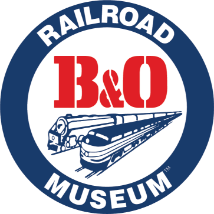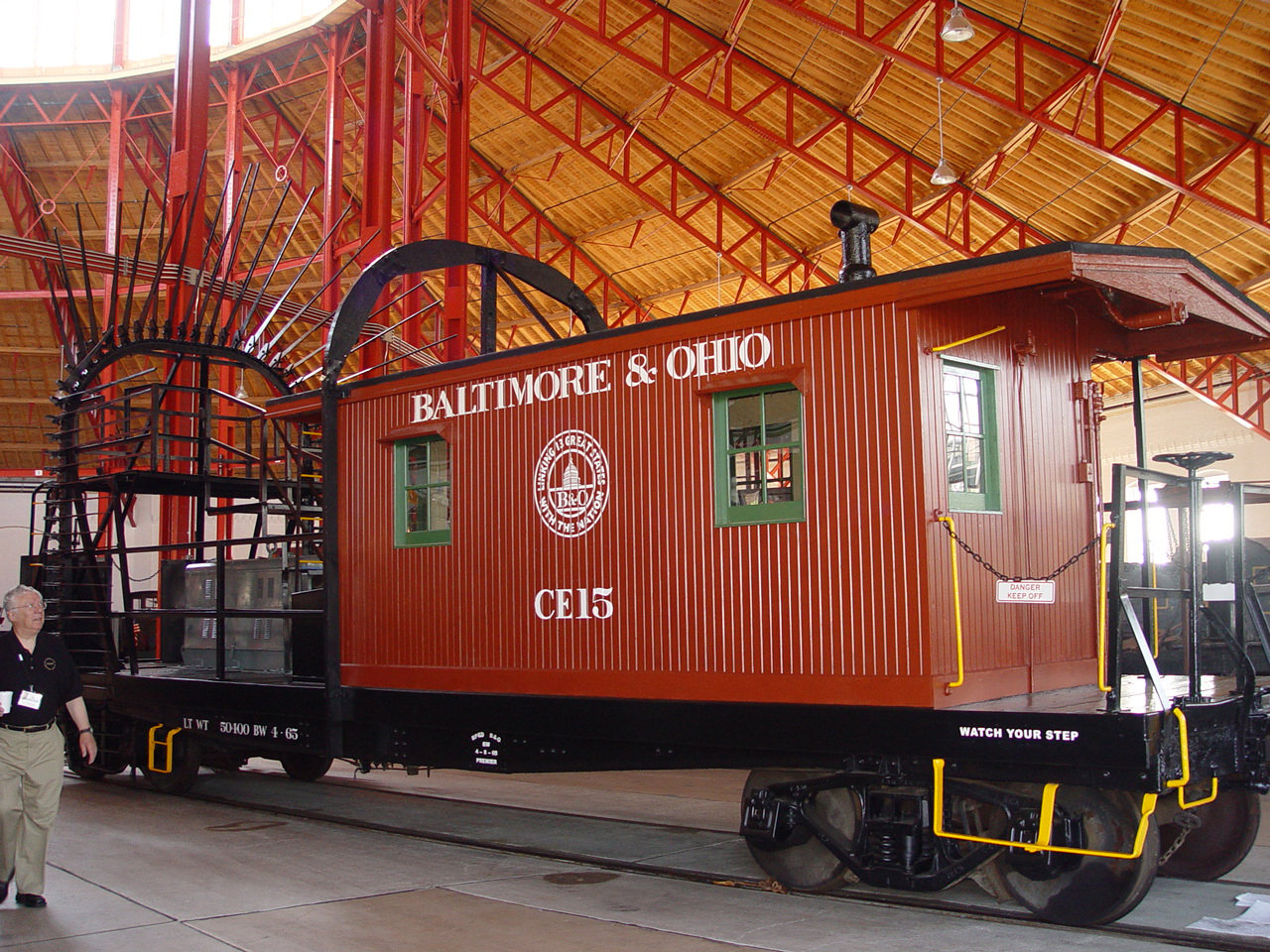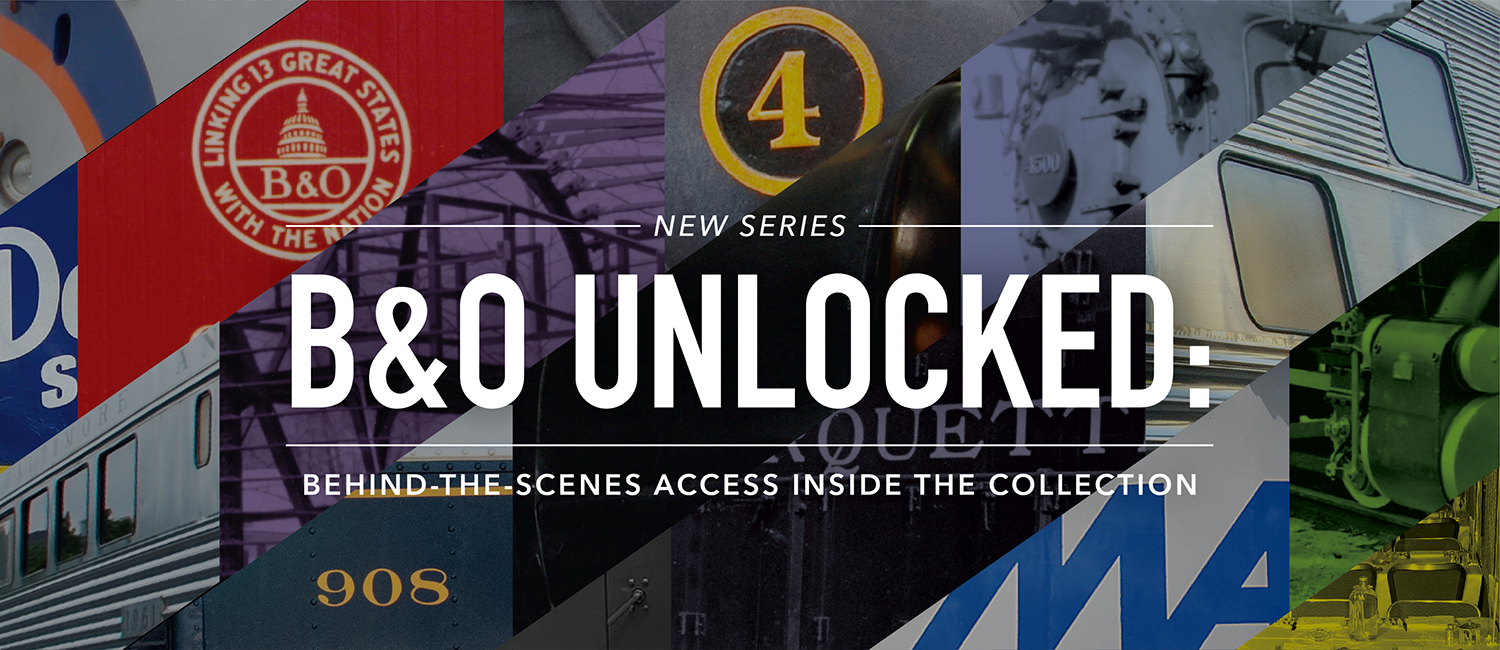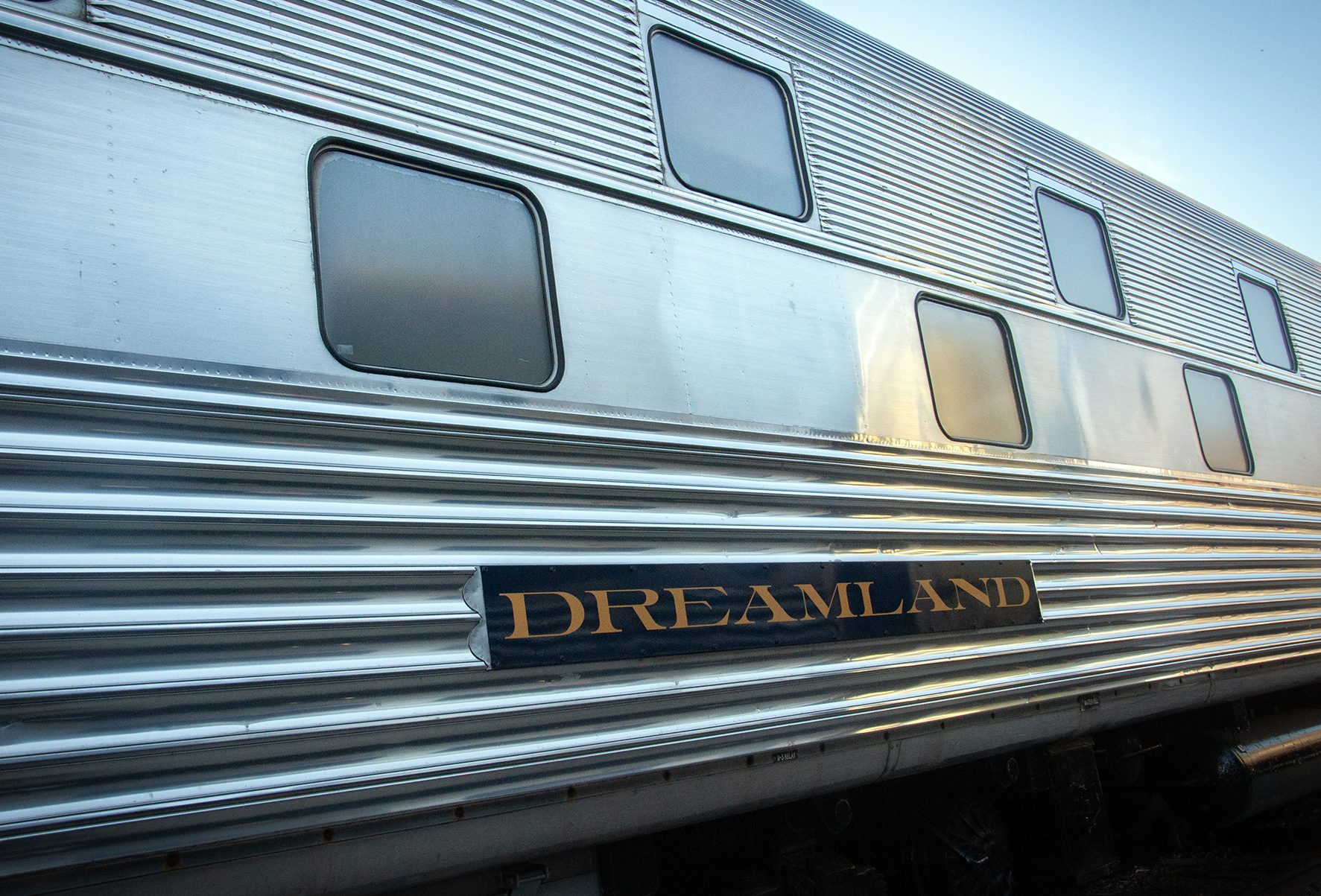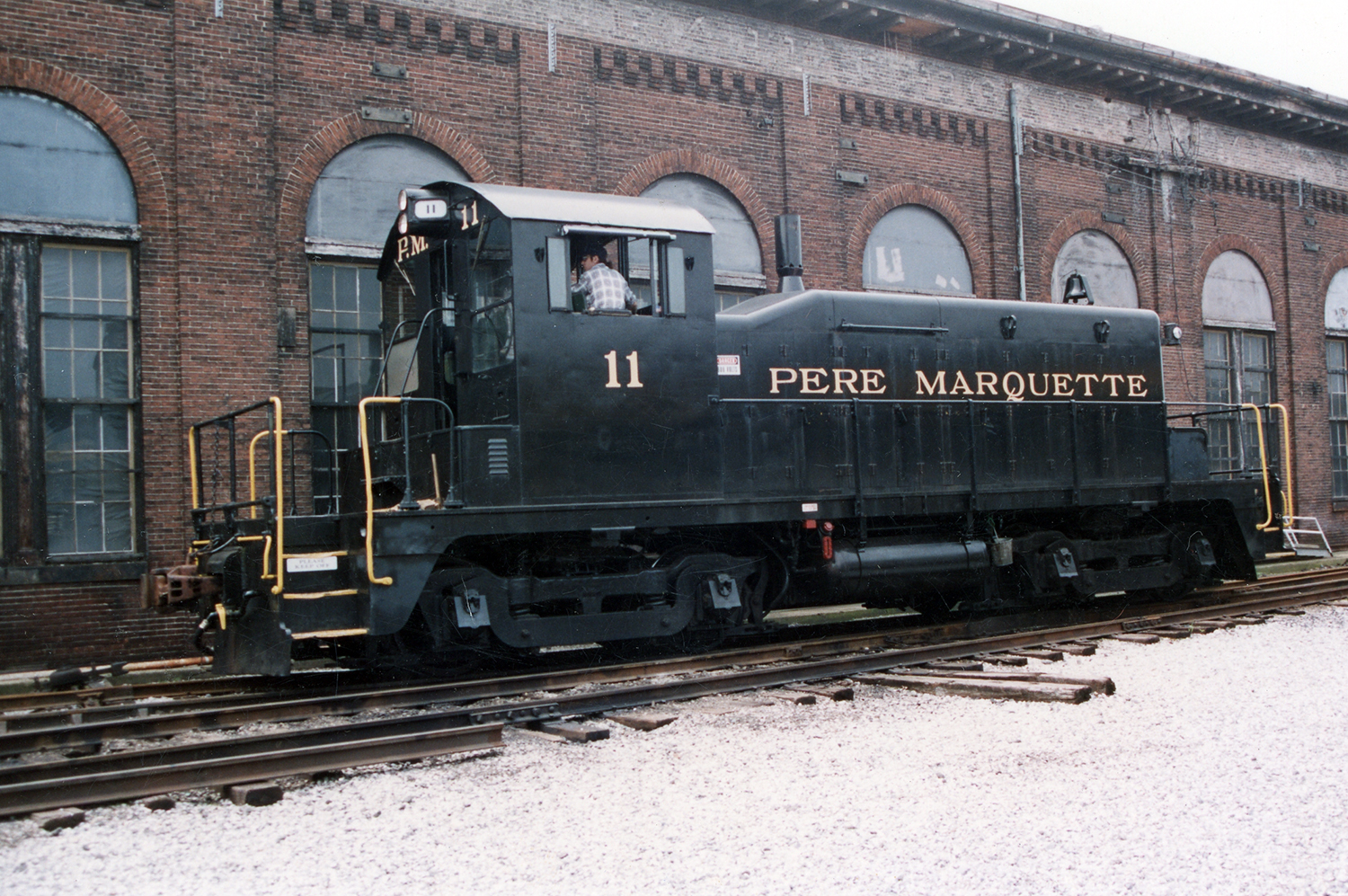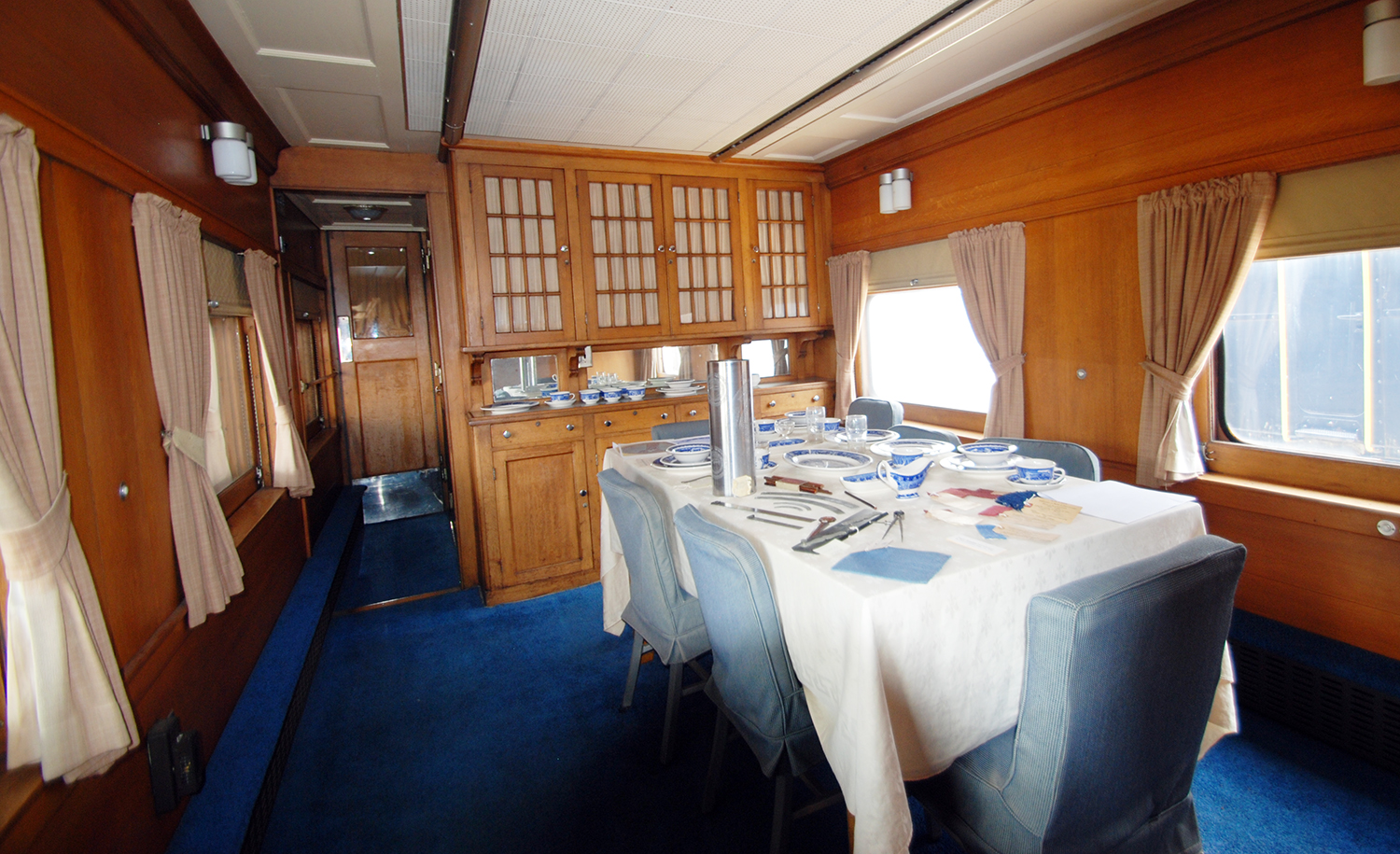Quick Facts
| Name | Tunnel Clearance Car |
|---|---|
| Manufacture Date | c. 1904 |
| Railroad Of Record | B&O Railroad |
| Manufacturer | B&O Railroad |
Description
The CE-15 is believed to be the world’s only surviving tunnel clearance car. At the dawn of the 20th century, freight cars and locomotives were getting a lot bigger. As a result, some railroad tunnels and bridges needed to be widened. To determine which ones needed expansion, railroads used special tunnel clearance cars like this one. These cars are also known as “tunnel gaugers,” or “porcupines” because of their foldable “quills.”
These Porcupines measured clearances by extending their quills and moving slowly through a tunnel, or across a bridge. As the quills struck the sides of the structure, they would pivot inward toward the car’s body. A crewman would then measure the angle of each quill to make a profile of the bridge or tunnel – essentially, engineers would have a 3D understanding of the current size of the structure to assess if it needed expansion. This was a long and tedious process known as “dragging.”
Around 1904 to 1907, the Mt. Clare shops, the current site of the B&O Railroad Museum, unveiled the X-15, a porcupine with the frame of a flat car, the body of a single-truck bobber caboose, and a raised observation platform surrounded by 67 quills. It was the only tunnel clearance car ever constructed by the B&O Railroad. Later renumbered as the CE-15, the porcupine spent most of its career travelling between Clarksburg and Parkersburg, West Virginia, where 22 tunnels demanded the attention of the B&O Civil Engineering Department. Though the majority of its time was spent in West Virginia, the CE-15 became one of the few pieces of rolling stock to cross every mile of the B&O Railroad.
Virtual Tour:
Visual Tour Description:
Exterior
The front end of the CE-15 features foldable quills in an arch, with the shortest on the bottom of either side and the longest in the center top of the arch. The quills are painted black and come to a slightly rounded point on their end. Around the quills sits a black metal frame, this frame supports a small platform behind the arch of quills and a short staircase. Under the platform there is a large, gray metal box. Behind the quills is the enclosed wooden caboose, painted red with white lettering identifying the car as the Baltimore & Ohio CE-15. The B&O logo featuring the capitol dome is also featured in white. The caboose also has two windows on each side framed in dark green. A guardrail around the sides of the caboose allows for a walkable path. A large, circular light sits on the front of the caboose to light the way forward.
Interior
Inside the caboose there are various metal boxes housing equipment. The ceiling is white with pipes and lightbulbs visible. The top half of the walls are also white and paneled with square pieces of metal. The lower half of the walls are the same dark green as the window framing, caboose door, and wooden floors. The lighting in the caboose is dim but the windows provide sufficient natural light.
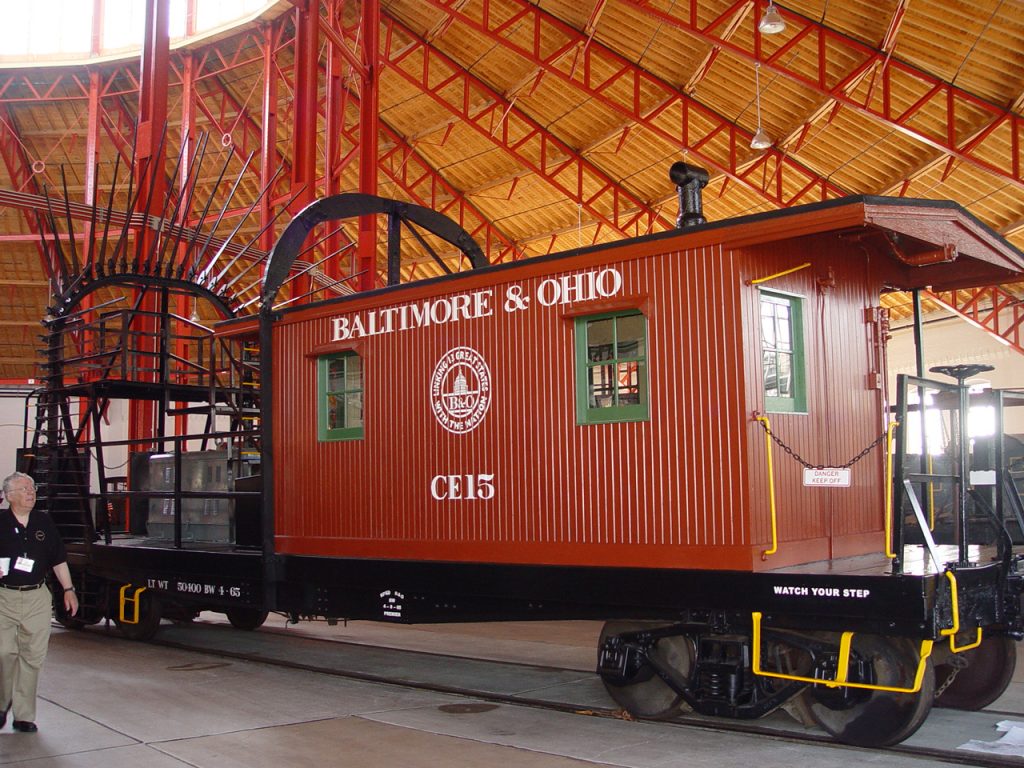
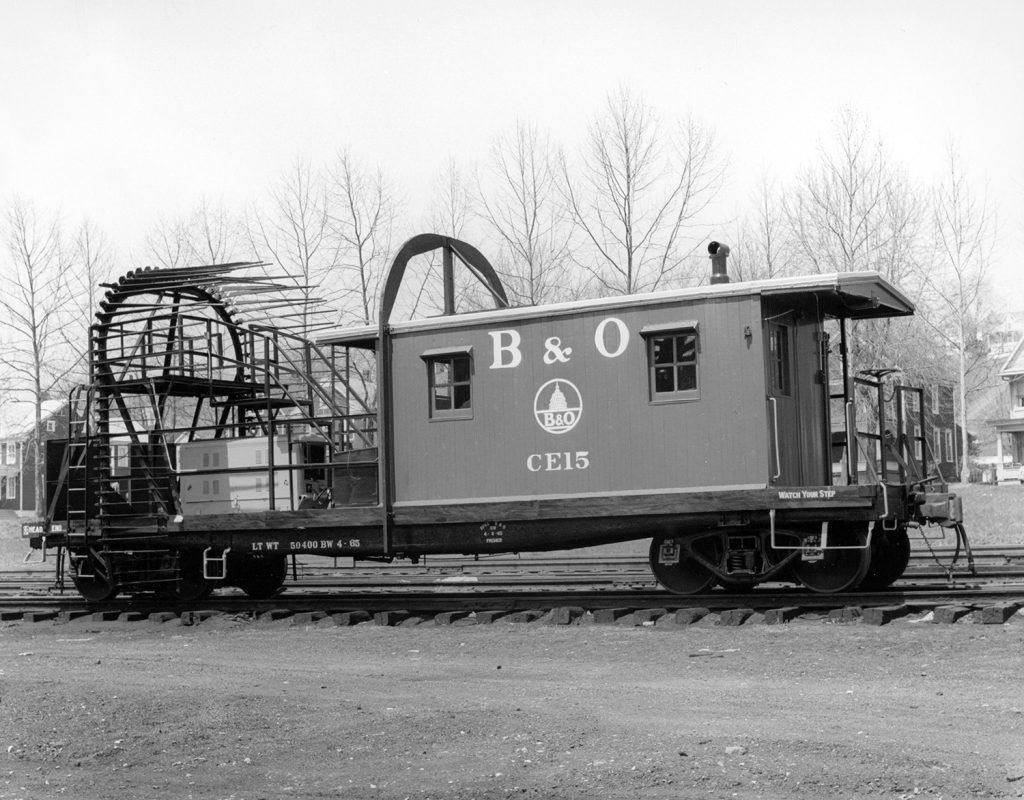
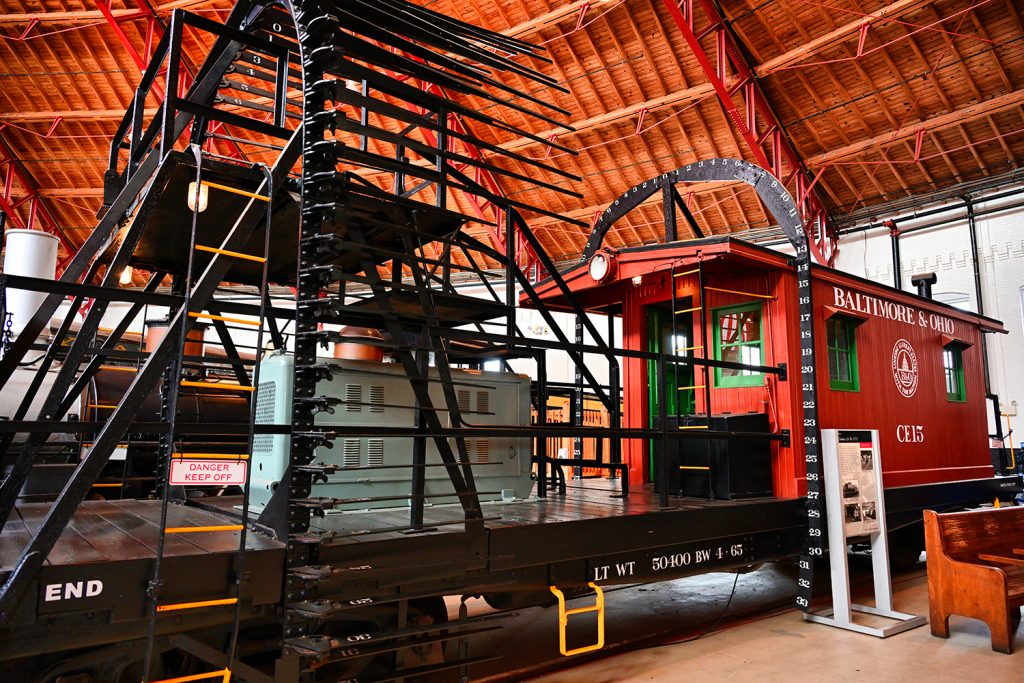
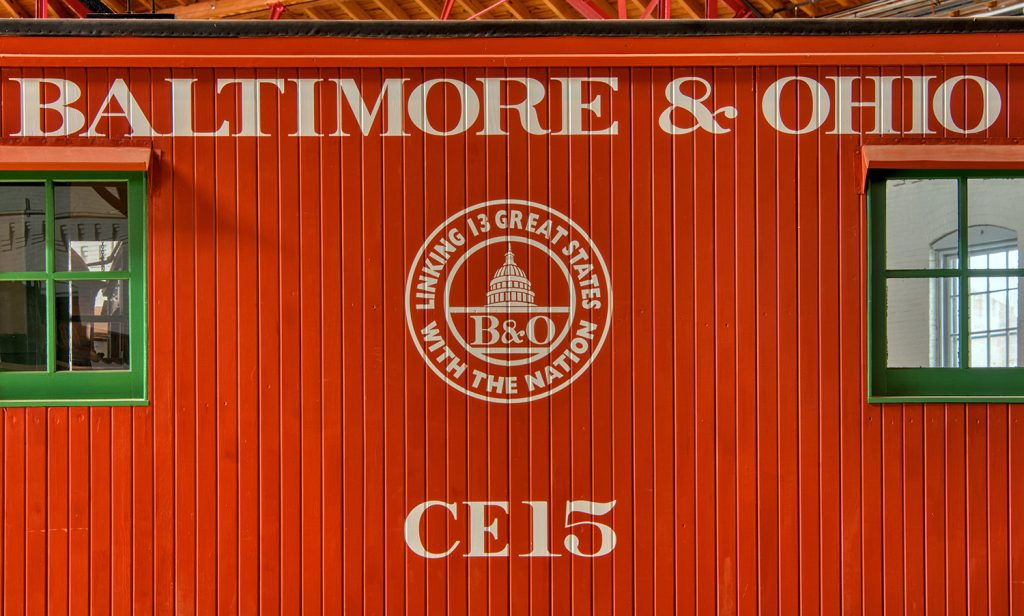
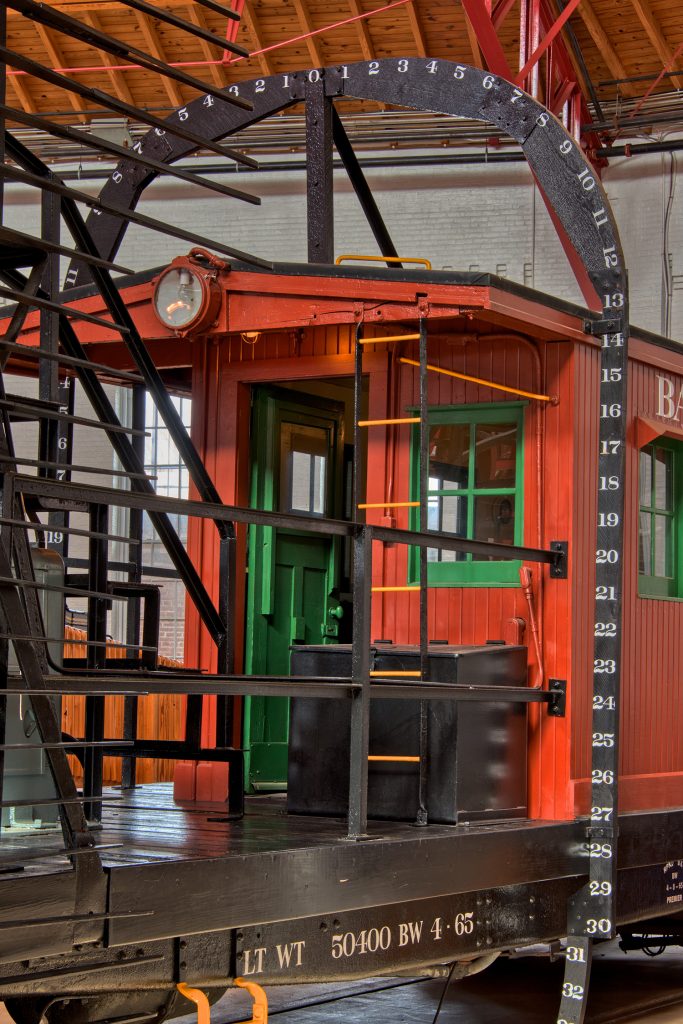
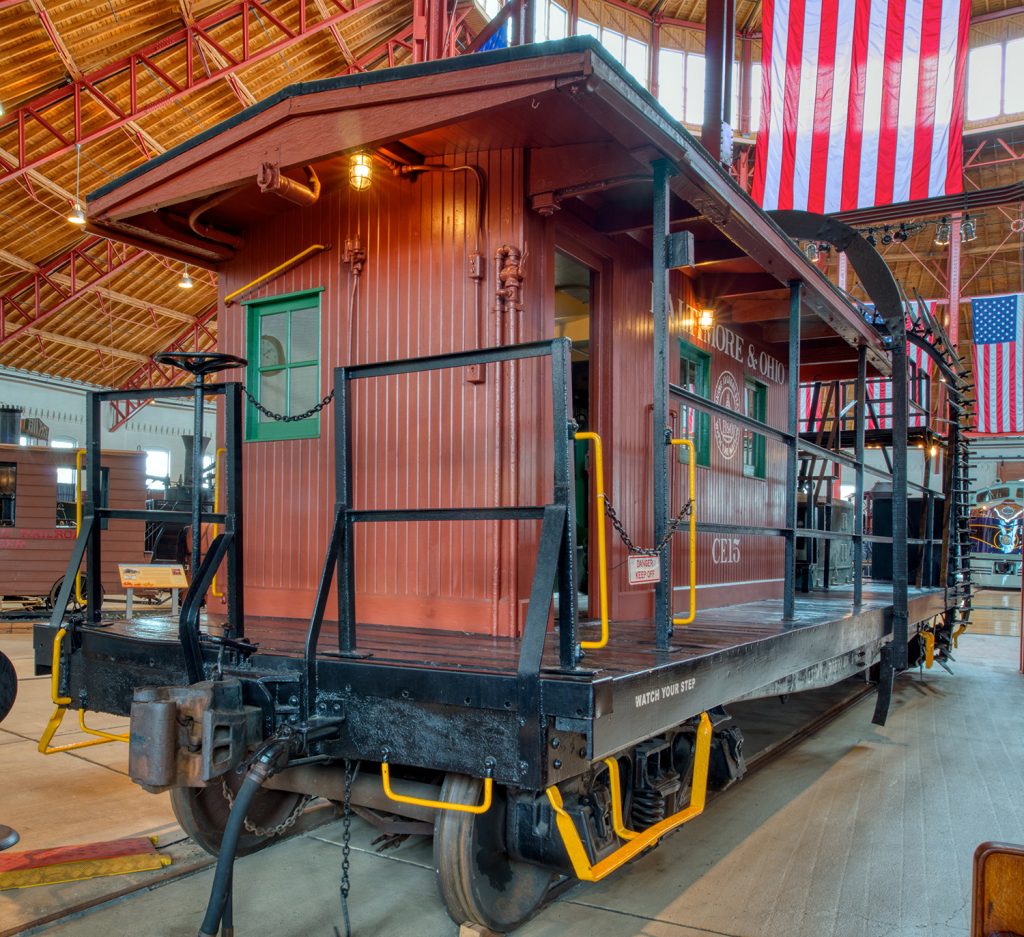
Can't Get Enough?
There’s even more to explore. Check out this and other unique pieces from our collection.
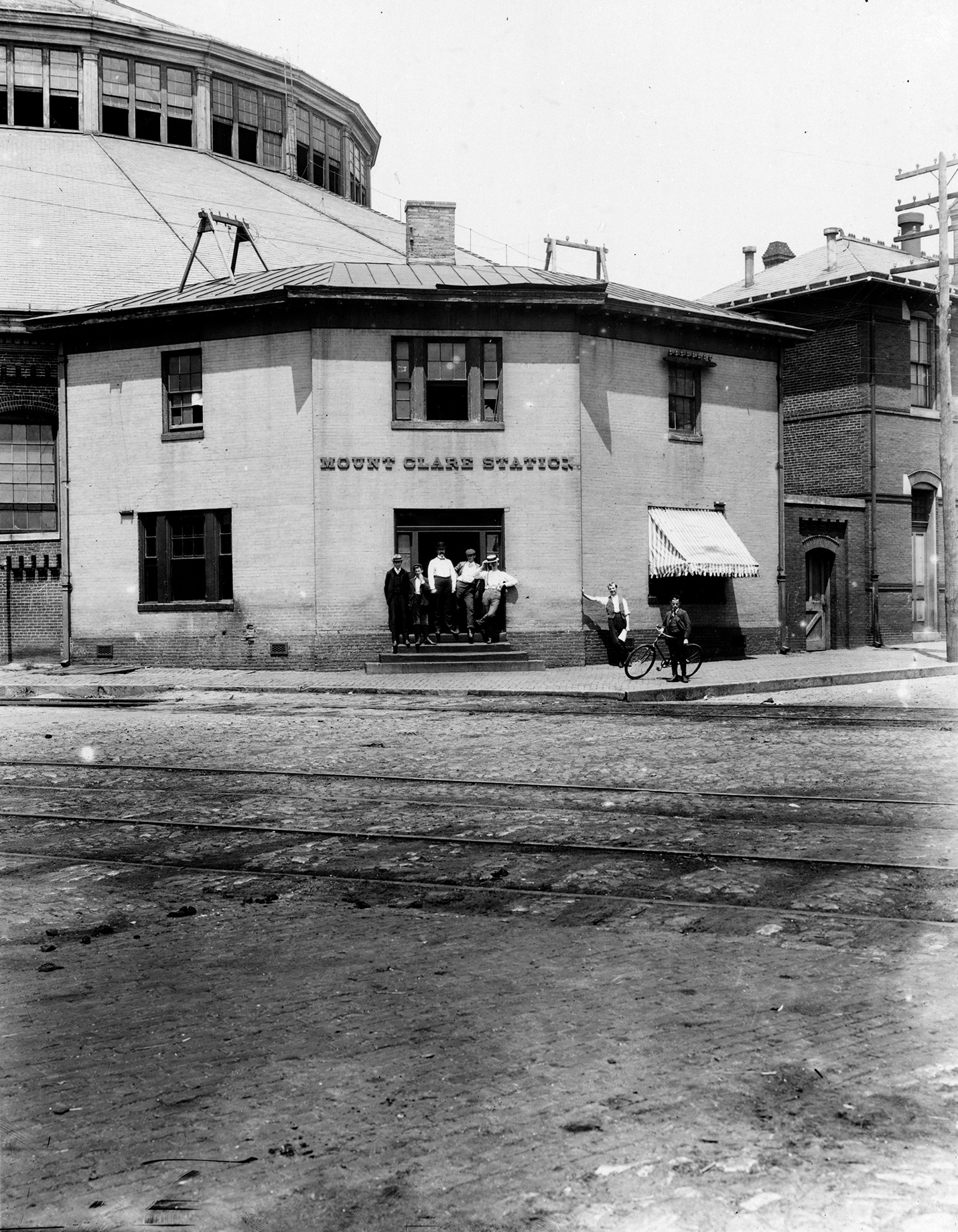
Did You Know?
The first passenger train ticket in the United States was sold on our historic site in 1830.
